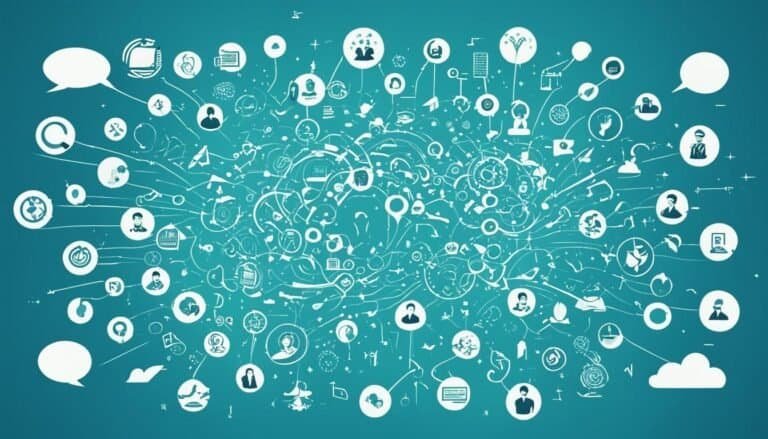Deaf Culture and American Sign Language
The intersection of Deaf culture and American Sign Language (ASL) offers a rich tapestry of history, language, and community. As we explore the origins of ASL and the key elements that shape Deaf culture, we uncover a complex and vibrant world that is often overlooked in mainstream discourse.
The evolution of ASL in the United States has not only shaped the way Deaf individuals communicate but has also played a pivotal role in defining their identity and fostering a strong sense of community. Furthermore, delving into the nuances of ASL literature, arts, and media provides a deeper understanding of the unique ways in which Deaf individuals express themselves and engage with the world.
This exploration not only sheds light on the challenges faced by the Deaf community but also celebrates their remarkable achievements.
Key Takeaways
- ASL originated in the early 19th century through the collaboration of Thomas Hopkins Gallaudet and Laurent Clerc, and was influenced by French Sign Language (FSL) and Indigenous signs.
- Deaf culture emphasizes the importance of a tight-knit community and has its own cultural norms and communication strategies.
- ASL literature, arts, and media provide a platform for cultural preservation and expression, showcasing the resilience, creativity, and unique perspective of Deaf artists.
- Deaf individuals face challenges in accessing quality education and employment opportunities, but embracing ASL can help overcome communication barriers and empower Deaf individuals in educational and professional settings.
The Origins of American Sign Language
Frequently overlooked in discussions of language origins, American Sign Language (ASL) has a rich and complex history that dates back centuries. The roots of ASL can be traced to the early 19th century when Thomas Hopkins Gallaudet, an American educator, collaborated with Laurent Clerc, a renowned Deaf teacher from France. Clerc brought with him the influence of French Sign Language (FSL), which significantly impacted the development of ASL. The fusion of FSL with local sign languages gave rise to what is now recognized as ASL.
Moreover, Indigenous signs played a crucial role in the formation of ASL. Native American sign languages were already in use long before the arrival of European settlers. The interaction between Indigenous communities and early European settlers led to the exchange of signs, contributing to the linguistic diversity of ASL. These Indigenous signs, along with the influence of FSL, laid the foundation for the unique grammatical structure and vocabulary found in ASL today.
Key Elements of Deaf Culture
The historical influences that shaped American Sign Language (ASL) also laid the groundwork for the key elements of Deaf culture, which encompass a unique linguistic and social identity. Understanding the key elements of Deaf culture is essential for effective communication and interaction within the Deaf community.
These elements include:
- Deaf Identity: Deaf individuals often view their deafness not as a disability but as a cultural identity. This perspective shapes their self-perception and influences their interactions with the world around them.
- Community: Deaf culture emphasizes the importance of a tight-knit community. Deaf individuals often find a sense of belonging and understanding within their own community, which provides crucial support and solidarity.
- Cultural Norms and Communication Strategies: Deaf culture has its own set of cultural norms and communication strategies that differ from those of the hearing community. These norms and strategies, which may include the use of ASL and visual communication, are central to the Deaf community's unique way of life.
Understanding and respecting these key elements is fundamental for fostering effective communication and building meaningful connections within the Deaf community.
The Evolution of ASL in the United States
The evolution of American Sign Language (ASL) in the United States mirrors the rich and complex history of the Deaf community, reflecting the linguistic and cultural developments that have shaped its unique identity. ASL has undergone significant changes over time, influenced by various factors such as cultural interactions, educational settings, and technological advancements. The table below provides a brief overview of the key linguistic influences on the evolution of ASL in the United States:
| Linguistic Influences | Description | Impact |
|---|---|---|
| French Sign Language | Introduced to the U.S. in the 19th century by Laurent Clerc, a Deaf teacher from France | Contributed signs and grammar to ASL |
| Residential Schools | Establishment of schools for the Deaf where different regional sign languages converged | Standardized and unified ASL across regions |
| Linguistic Research | Academic studies and linguistic research on ASL's structure and grammar | Enhanced understanding and recognition of ASL as a legitimate language |
These influences have played a crucial role in shaping ASL into a distinct and thriving language, demonstrating its resilience and adaptability within the Deaf community. The ongoing evolution of ASL continues to be influenced by various social, educational, and technological factors, reflecting the dynamic nature of sign language evolution.
Understanding Deaf Identity and Community
The evolution of American Sign Language in the United States has greatly influenced the development of Deaf identity and the tight-knit community it encompasses. Understanding Deaf identity and community is crucial for anyone involved in deaf education or working as sign language interpreters.
Here are three key aspects to consider:
- Cultural Identity: Deaf identity is not solely defined by audiological status but is deeply rooted in shared experiences, values, and a sense of belonging to a linguistic and cultural minority. Individuals who are Deaf often view themselves as part of a distinct cultural group with its own customs, traditions, and social norms. Understanding and respecting this cultural identity is fundamental in promoting inclusive and effective deaf education.
- Community Support: The Deaf community provides vital support for its members, offering a sense of solidarity and camaraderie. It serves as a platform for sharing experiences, advocating for rights, and fostering a sense of empowerment. Sign language interpreters play a crucial role in facilitating communication within this community, bridging the gap between Deaf individuals and the hearing world.
- Challenges and Advocacy: Deaf individuals often face societal barriers and discrimination. Understanding the challenges they encounter, such as limited access to education and employment opportunities, is essential in advocating for inclusive policies and practices. Sign language interpreters can contribute to breaking down these barriers by ensuring effective communication and promoting equal access to information and services.
ASL Literature, Arts, and Media
Exploring the rich and diverse landscape of ASL literature, arts, and media reveals the depth of creativity and expression within the Deaf community. From poetry and storytelling to visual arts and filmmaking, ASL literature, arts, and media offer a unique insight into the Deaf perspective and the artistic expression of its community members. This creative output serves as a vehicle for cultural preservation, identity affirmation, and communication of shared experiences among Deaf individuals.
| ASL Literature | ASL Arts | ASL Media |
|---|---|---|
| Poetry | Visual Arts | Films |
| Storytelling | Sculpture | Documentaries |
| Folktales | Performance Art | Web Series |
| ASL-centric Novels | Photography | News Programs |
| Essays | Galleries | Social Media |
ASL literature, arts, and media not only enrich the cultural landscape but also provide a platform for Deaf artists to express themselves authentically and share their stories with the world. Through these mediums, the Deaf community showcases its resilience, creativity, and unique perspective, contributing to a more inclusive and diverse society.
Navigating Challenges and Celebrating Achievements
How do Deaf individuals navigate challenges and celebrate achievements within their unique cultural and linguistic landscape?
Navigating the complexities of Deaf education and employment opportunities can present significant challenges, but the Deaf community has developed effective strategies to overcome these barriers and celebrate their successes.
- Advocacy and Community Support: Deaf individuals often rely on advocacy groups and community support networks to navigate challenges in accessing quality education and securing employment opportunities. These groups play a crucial role in promoting awareness, influencing policy changes, and providing essential resources to address the unique needs of the Deaf community.
- Linguistic and Cultural Empowerment: Embracing American Sign Language (ASL) and Deaf culture is a source of empowerment for many individuals. By celebrating their language and cultural identity, Deaf individuals can overcome communication barriers and assert their rights in educational and professional settings.
- Professional Development and Mentorship: Access to mentorship and professional development opportunities is vital for Deaf individuals to thrive in their careers. Mentorship programs and networking initiatives contribute to breaking down employment barriers and celebrating achievements in various professional fields.
Conclusion
In conclusion, the prevalence of American Sign Language (ASL) has continued to grow, with an estimated 500,000 to 2 million people in the United States using ASL as their primary form of communication.
Deaf culture is a rich and diverse community with its own unique history, language, and traditions.
As ASL continues to evolve and gain recognition, it is important to appreciate and understand the contributions and experiences of the deaf community.







